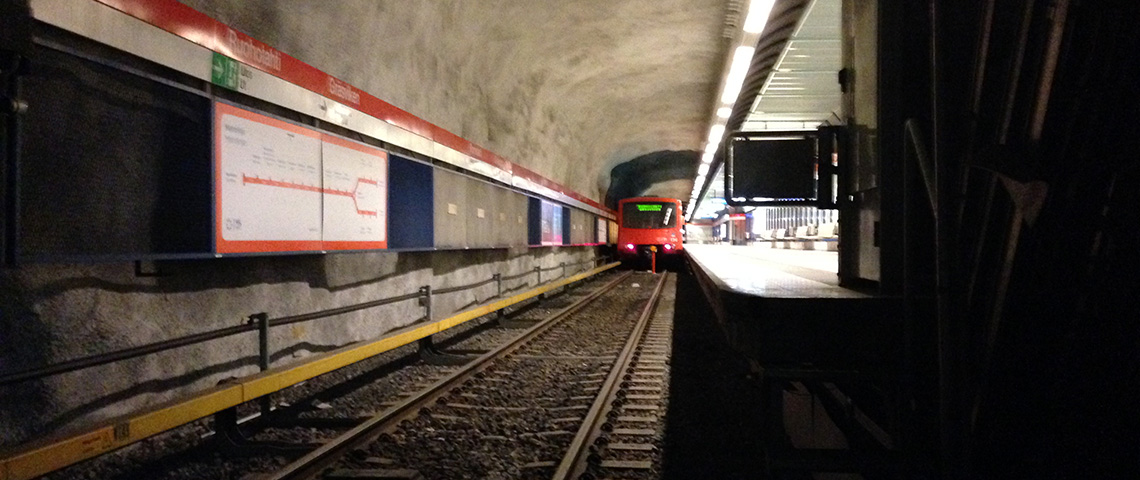West Metro
The West Metro will enable the metro traffic in the Helsinki metropolitan area to expand significantly. There will be eight new stations. The west metro route will be 14 kilometres long and comprises of two adjacent underground tunnels. The impact of ground-borne noise and vibration from the bedrock must be taken into account throughout the route.

It is important in the design that the vibration caused by metro traffic does not result in vibration and noise disturbances in the surrounding areas. There are hundreds of residential, school and office buildings above and in the immediate surroundings of the west metro line that are exposed to the ground-borne noise of the metro traffic. In addition, there are special facilities for scientific research and research equipment in Otaniemi and Keilaniemi that are very sensitive to ground-borne noise and even the slightest vibration.
Akukon has been involved in the west metro project since the preliminary planning phase in 2009. Among other things, Akukon has conducted the ground-borne noise report for the Ruoholahti-Matinkylä route, designed the ground-borne noise abatement solutions for the metro rail, performed the vibration survey on sensitive imaging and research equipment in Otaniemi and Keilaniemi, and acted as the technical specialist during the rail and construction planning phase as well as throughout the construction phase.
Noise levels not affected by the metro
Metro traffic causes vibration in the bedrock that can spread to the surrounding buildings. Ground-borne noise can be heard indoors as a low frequency noise. The objective in the west metro project was to prevent significant changes to the usage of the facilities, which could potentially be caused by the new metro line compared to existing background noise levels.
“In practice, the entire west metro line will be insulated in order to prevent ground-borne noise by adding a vibration damping carpet under the rubble at approximately 70 centimetres deep below the tracks. This is the most efficient and cost-effective method to dampen the ground-borne noise stimulus, which would otherwise be attached to the bedrock and thus the surrounding area,” says Akukon’s consultant Timo Peltonen. Ground-borne noise is directly connected to buildings with their foundations in or near the bedrock. There are hundreds of bedrock founded buildings along the west metro line.
Akukon has calculated the sufficient mitigation measures for each building and residential area both computationally and based on measurements performed in the Helsinki metro. During the project, Akukon has determined the ground-borne noise levels at the surrounding buildings of the west metro, identified the desired values for ground-borne noise and the building-specific abatement requirements as well as calculated the required insulation for the rail structures.
The west metro is estimated to be completed by the end of 2016, and Akukon’s work continues until then, if not longer.
Experts
- Consultants in charge: Timo Peltonen
- The rest of the team: Vibkon Oy / Mats Backholm (junior consultant), Timo Markula
Location: West metro